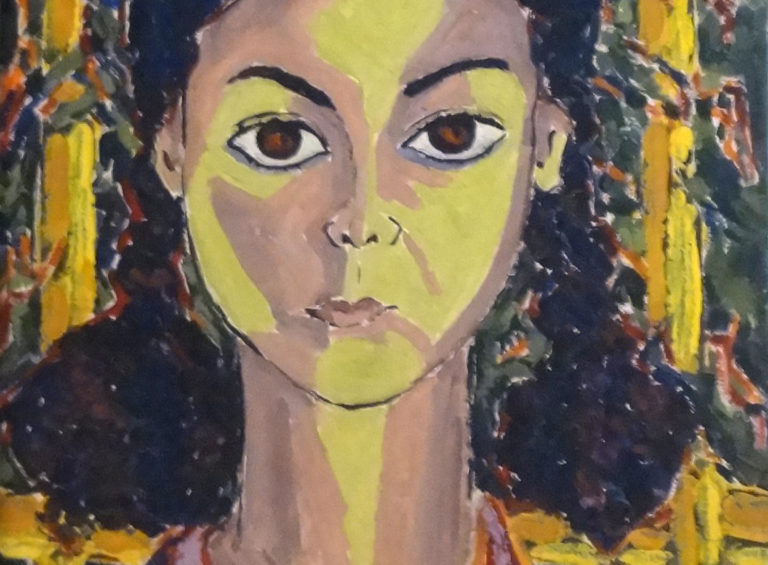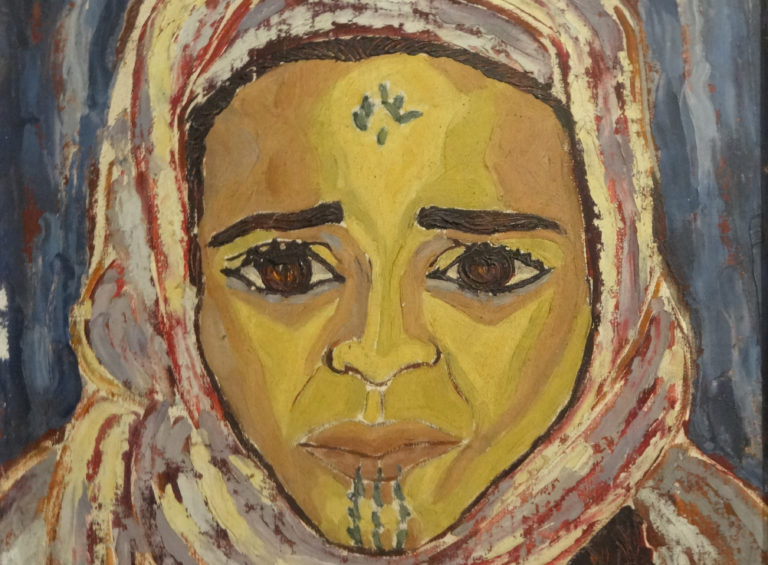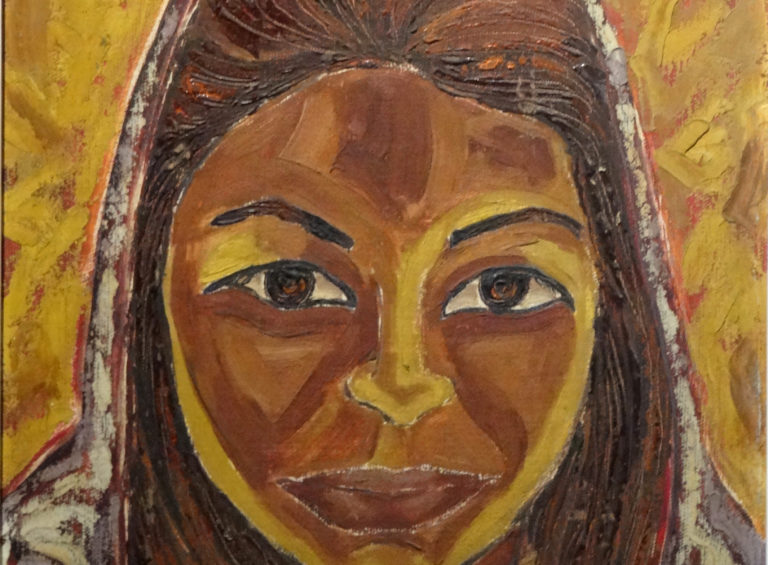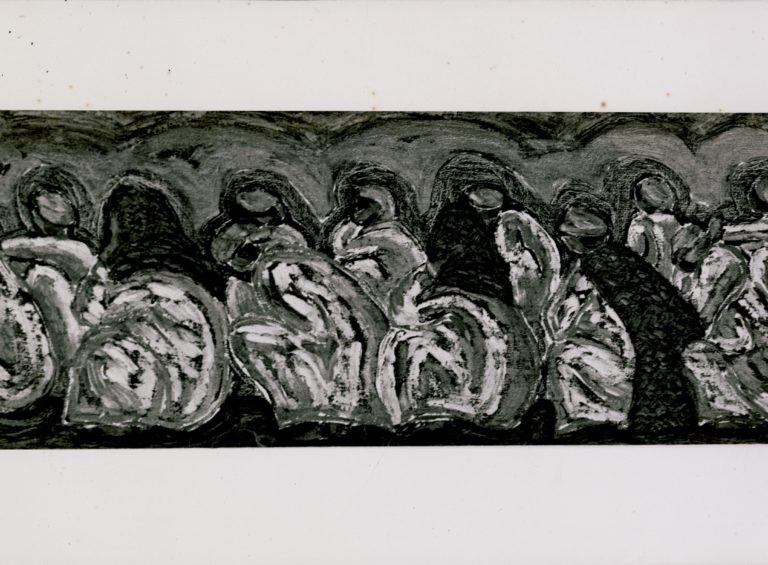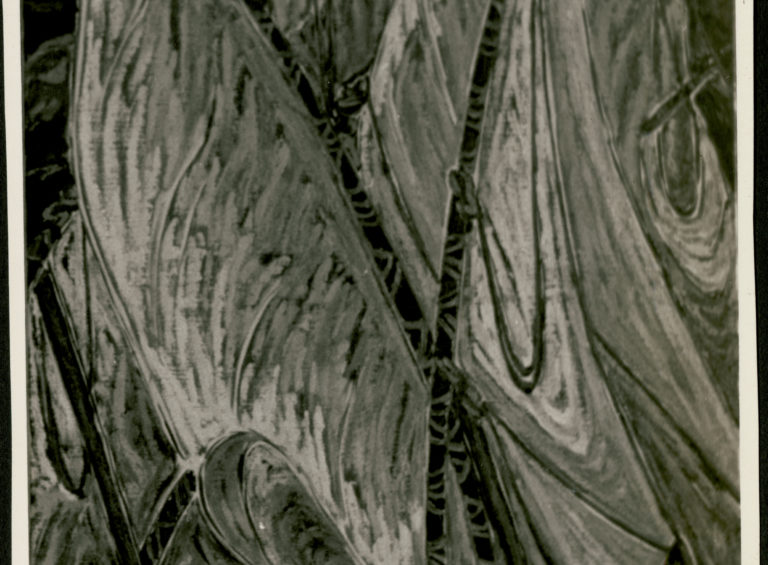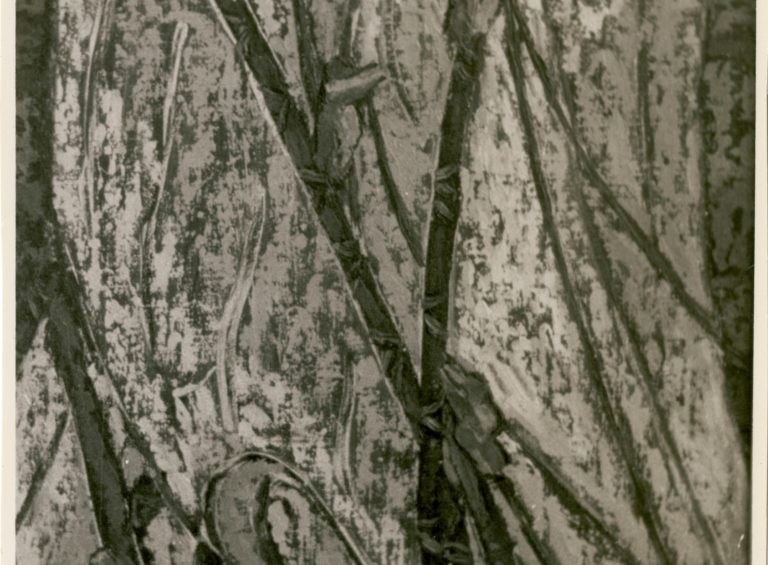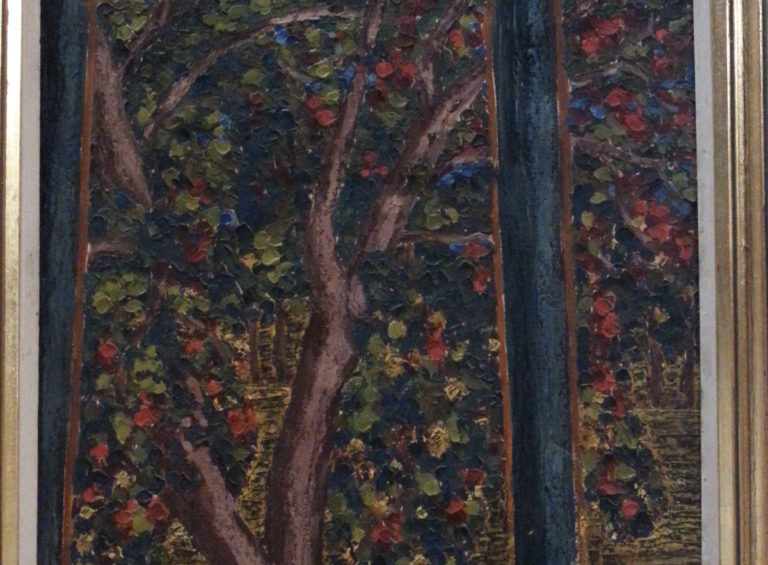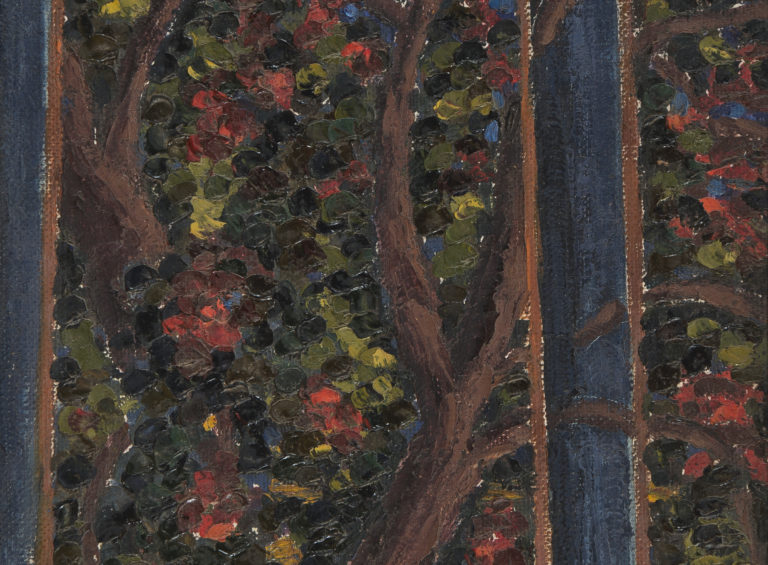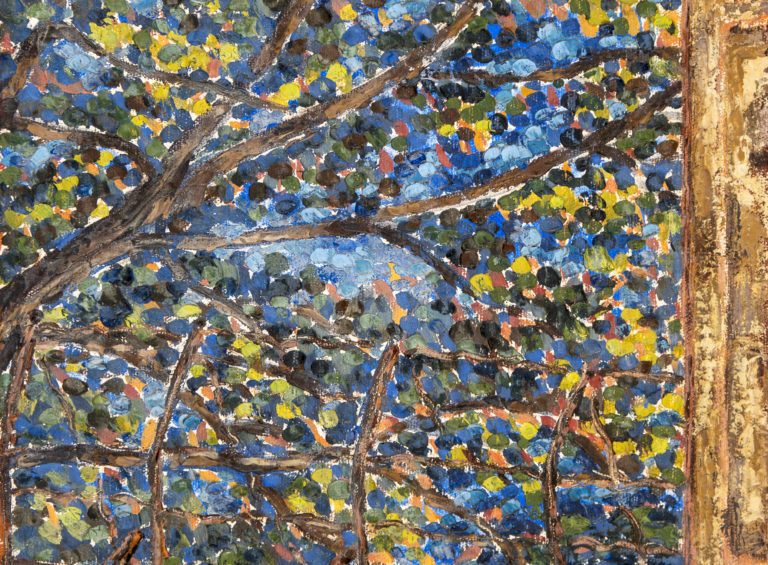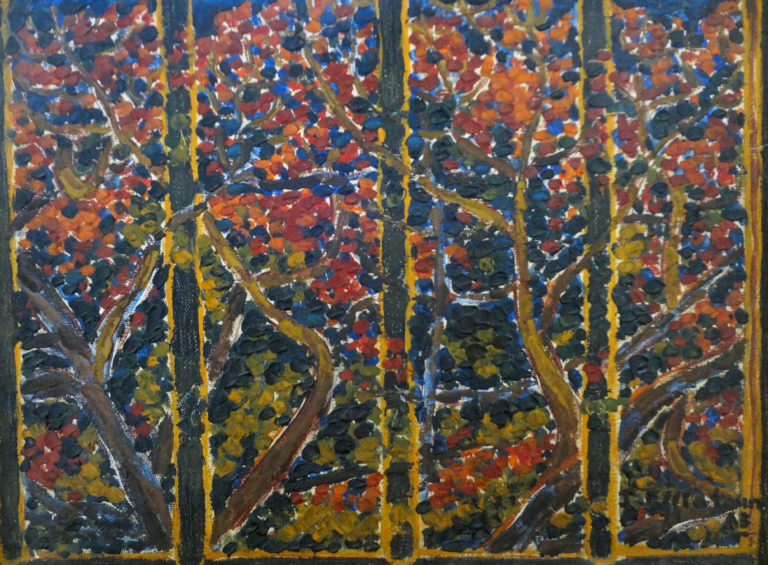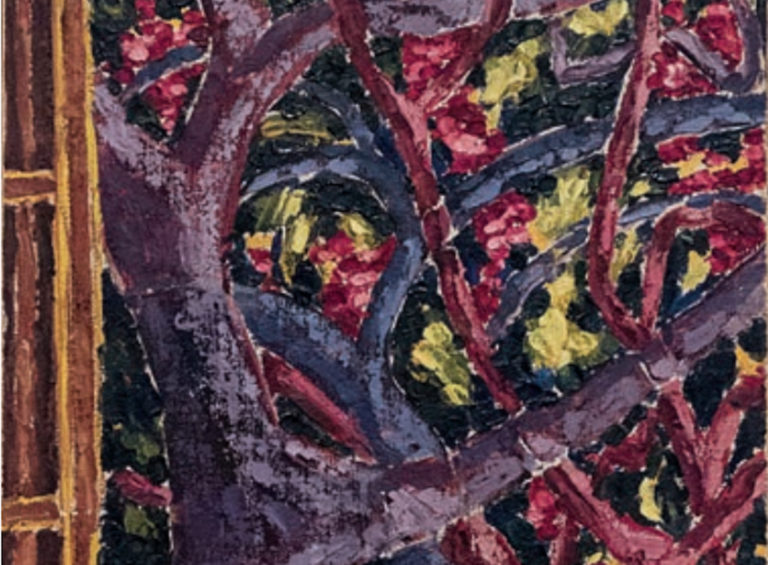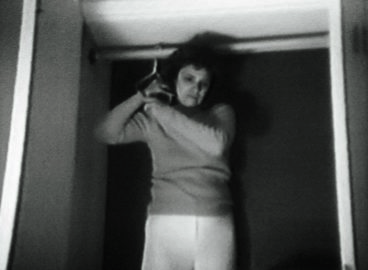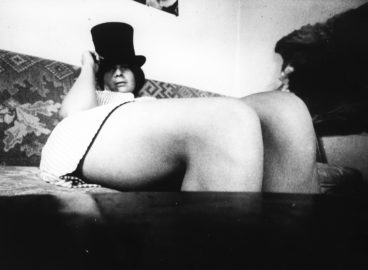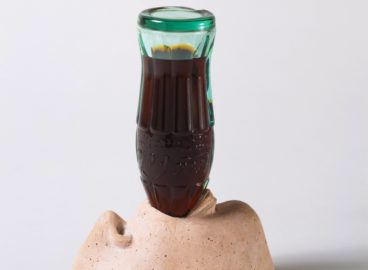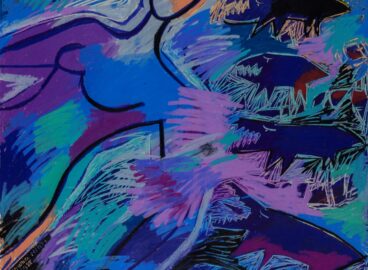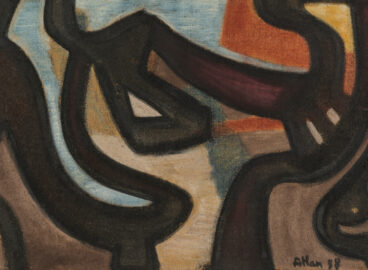Inji Efflatoun (1924-1989) was an Egyptian painter as well as a Marxist and feminist activist. From June 1959 to July 1963, she was imprisoned by the Nasserite regime for her communist ties. Celebrated as early as the 1960s, and highly sought-after on the art market today, her production from this period is often considered the highlight of her oeuvre. Is it because of their documentary value, as they testify to the oppression against political opponents by the Nasserite regime and show the secret reality of the women’s prison? Is it because they shed light on the unusual personal history of this artist and activist? Or do these paintings have exceptional aesthetic qualities? Nadine Atallah attempts to answer these questions by observing a selection of paintings produced between 1959 and 1963 in the light of unpublished letters written by Efflatoun to her family whilst she was in prison.
This text is available in French here.
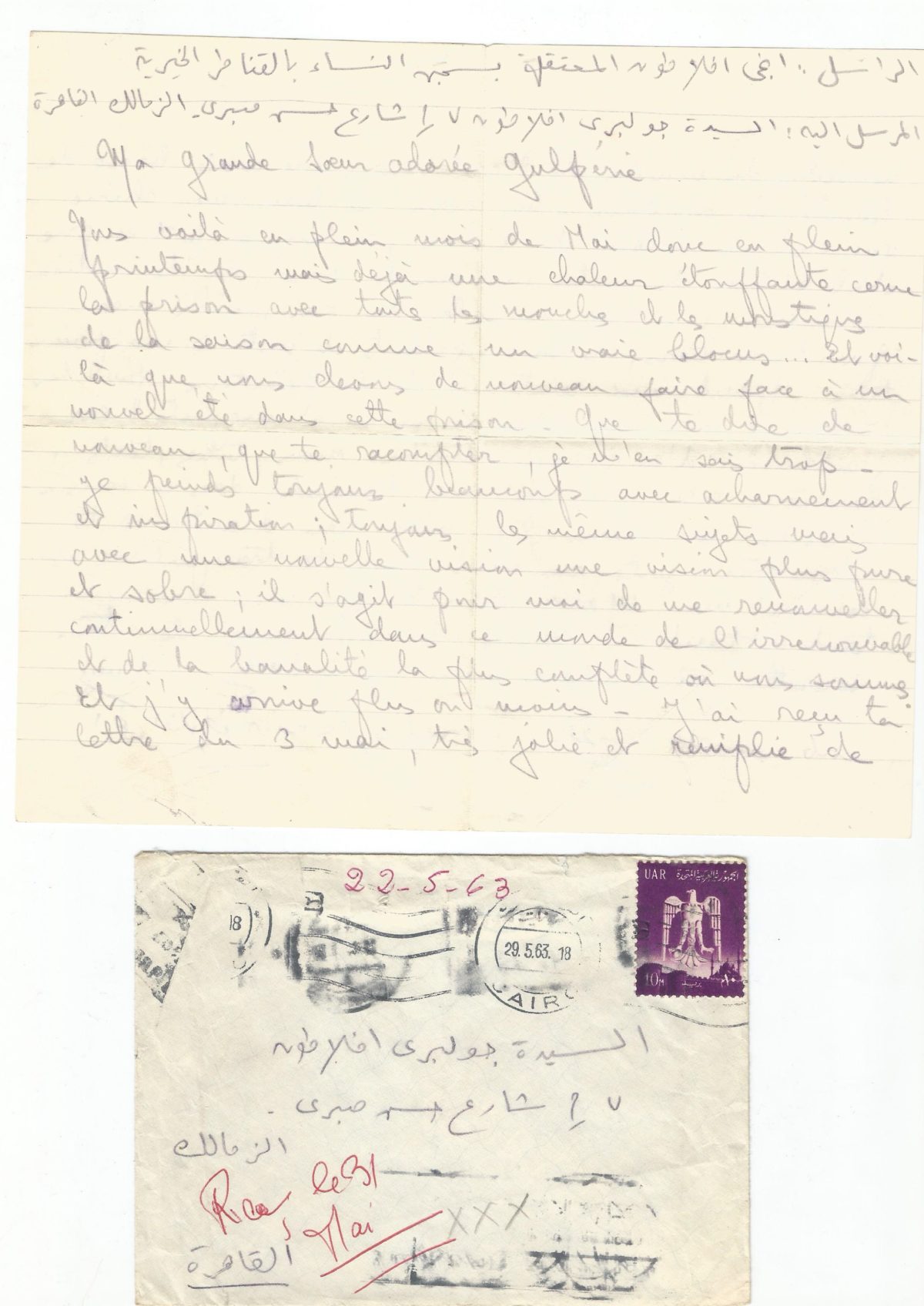
“I still paint a lot, with determination and inspiration; the subjects are always the same but with a new vision, a purer and more sober vision; for me, it’s about constantly renewing myself in this world of the unrenewable1Efflatoun writes “irrenouvable” instead of “inrenouvelable”, which is a word that does not exist and may come from the language interferences specific to Egyptian Francophonie. Thanks to Mercedes Volait who noted this peculiar term. and the complete banality in which we find ourselves” [Fig. 1].2Inji Efflatoun to Gulpérie Efflatoun-Abdalla, May 22, 1963, Inji Efflatoun archives, French Institute for Oriental Archaeology, Cairo (hereafter abbreviated as IFAO). These words were written in 1963 by the Egyptian painter Inji Efflatoun (1924–1989) from her jail cell, where she had been detained for almost four years. From June 1959 to July 1963, she was imprisoned by the Nasser regime for belonging to the Communist Party. One of the leaders of the Egyptian Revolution in which King Farouk was deposed in 1952, Gamal Abdel Nasser became president in 1956 and remained in power until his death in 1970. Nasser established a one-party dictatorship that violently repressed all opposition. In 1959, when he led massive detention campaigns targeting communists, intellectual and cultural spheres were particularly affected.3For more about the ideological expressions of Nasserism and its conflicted relationship to the Egyptian intelligentsia, see Anouar Abdel-Malek, Égypte, société militaire (Paris: Éditions du Seuil, 1962); and Salah Isa, Muthaqqafun wa ‘askar (Cairo: Maktabat Madbuli, 1986). Efflatoun, who was among those arrested, became one of Egypt’s first female political prisoners.
During her incarceration, Efflatoun painted fervently, depending on the alternation of permissions and bans on her practicing her art, declared by the successive directors of the institution.4Efflatoun gives an account of her artistic activity in prison in her memoirs: Inji Efflatoun, Mudhakirat Inji Aflatun. Min al-tofula ila al-sign, ed. Said Khayal (Cairo: Dar al-thaqafa al-gadida, 2014), 193–97. Unpublished correspondence between the painter and her sister, Gulpérie Efflatoun-Abdalla, held in the Inji Efflatoun archives, IFAO, also helps shed light on this period. See also the portrait of the artist by Betty LaDuke, “Egyptian Painter Inji Efflatoun: The Merging of Art, Feminism, and Politics,” NWSAJournal 1, no. 3 (Spring 1989): 474–485. At first, she was allowed to paint on the condition that her work, together with other artifacts produced by her fellow inmates, be sold by the prison’s administrators. Efflatoun was allowed to buy back a number of her own artworks immediately after she painted them, while other works were acquired by prison staff. Several paintings were lost, confiscated by the penitentiary’s administration. It is therefore difficult to say how many works Efflatoun produced over the course of her detention.
The fifty or so oil paintings that I have identified5These are mostly paintings from the artist’s personal collection which she kept until her death. Today these works are dispersed among different museums and institutions in Egypt and other Arab countries. include portraits of detainees, as well as scenes of prison life that reveal the reality in women’s prisons that was kept secret. Looking beyond the prison bars, Efflatoun also started painting landscapes. Within each of her subjects—portraits, scenes of collective life, and landscapes—certain paintings offer variations of the same view. The artist even seems to put together a repetoire of forms and figures, at times reproduced identically from one work to the next. These pictorial choices are explained in part by the fact that she was rarely allowed to move about the prison with her art supplies, remaining constrained to the confines of her cell. The lack of models and visual sources of inspiration led Efflatoun to adopt a methodology that could be defined as serial. It seems that what she described as the “constraints . . . imposed on the subject and the place”6Efflatoun to Efflatoun-Abdalla, October 24, 1959, IFAO. in fact led her to explore the plastic potential of her medium through repetition. This shift is reflected in the variations in mark-making, color, framing, and composition in several similar portraits and scenes, which sparked renewal of her artistic practice—and of her understanding of the role of art.
As a teenager, Efflatoun made her debut in the surrealist group Art et Liberté (Art and Liberty).7Art et Liberté (Gamaʿiyat al-Fann wal-Horriya in Arabic) was a cosmopolitan group of artists, writers, and intellectuals active between 1938 and 1948. The group gathered around Marxist convictions and the belief that art—and surrealism in particular—was a means to resist the fascist and nationalist movements that were rising in Egypt and worldwide. See, among other sources, Aimé Azar, Les Inquiets (Cairo: Imprimerie Française, 1954); and Sam Bardaouil, Surrealism in Egypt: Modernism and the Art and Liberty Group (London and New York: I. B. Tauris, 2017). She was active in Egyptian feminist and Marxist circles in the late 1940s when she began to explore painting’s political and social potential as a corollary to her activism. In the 1950s, she organized several exhibitions of her own work, simultaneously denouncing the ravages of colonialism and the oppression of women in Egyptian society, as well as celebrating the Egyptian workforce.8Efflatoun exhibited her work in the following Cairo galleries: ADAM (1952), Aladdin (1953), Le Galion (1953), and l’Atelier du Caire (1959). During this time, Efflatoun authored three political books and newspaper columns,9On the topic of Efflatoun’s writings and political activities, see Didier Monciaud, “Les engagements d’Inji Aflâtûn dans l’Égypte des années quarante: la radicalisation d’une jeune éduquée au croisement des questions nationale, femme et sociale,” Cahiers d’Histoire. Revue d’Histoire Critique 126 (2015): 73–95. prioritizing “communicating [her] opinions”10Efflatoun, Mudhakirat Inji Aflatun, 102. On the narrative dimension of Efflatoun’s painting, see Nadine Atallah, “Have There Really Been No Great Women Artists? Writing a Feminist Art History of Modern Egypt,” in Under the Skin: Feminist Art and Art Histories from the Middle East and North Africa Today, eds. Ceren Özpınar and Mary Kelly, Proceedings of the British Academy (Oxford: Oxford University Press, 2020), 11–25. through writing and painting alike.
While before 1959 she divided her time between art and activism, in prison she began “a period of a painting practice,”11Efflatoun, Mudhakirat Inji Aflatun, 196. in which she seized the opportunity to “improve” her drawing and painting skills.12Efflatoun to Efflatoun-Abdalla, July 6, 1959, IFAO. In keeping with her political and social engagement, shortly after being imprisoned, Efflatoun started to make portraits of her fellow detainees to give a visual account, through their tragic personal stories, of the “misery of women in our society.”13Efflatoun to Efflatoun-Abdalla, August 15, 1959, IFAO. Efflatoun, who came from the Turco-Circassian aristocracy, strove throughout her life to better understand the reality of the Egyptian people, particularly its working-class women. Her close proximity in Nasser’s jails to common-law prisoners, including thieves, prostitutes, and murderers, allowed her to seal this rapprochement. The serial aspect of her portraits of fellow inmates, which she painted between 1959 and 1963, stems above all from a similarity of framing, often cut above the chest, reinforced by an almost always frontal and hieratic representation of faces [Figs. 2–6]. Only the intensity of their gaze animates them, the expression of which varies from the greatest distress to the iciest fixity. The very linear drawing, as well as the treatment of skin tones through the geometric juxtaposition of flat tints, which shape the faces with their contrasting shades, also unify the series of portraits. These personal, individual representations of fellow prisoners stand out from the group scenes, in which the figures are often faceless—perhaps alluding to the dehumanization of inmates by the prison system.
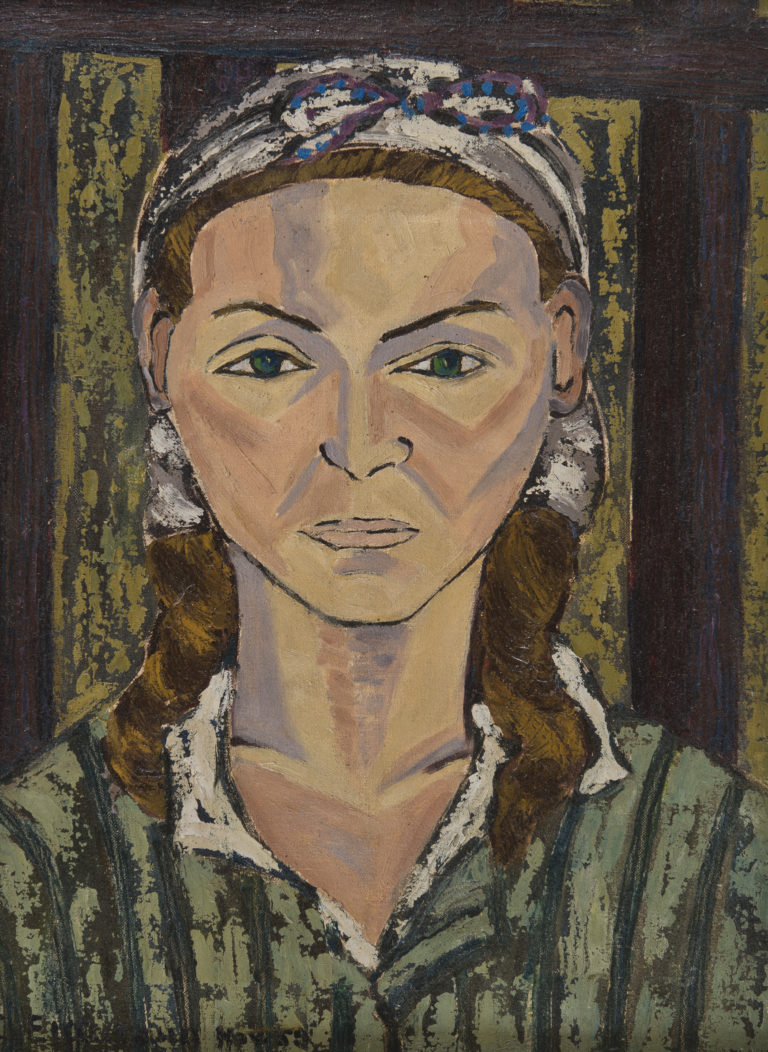
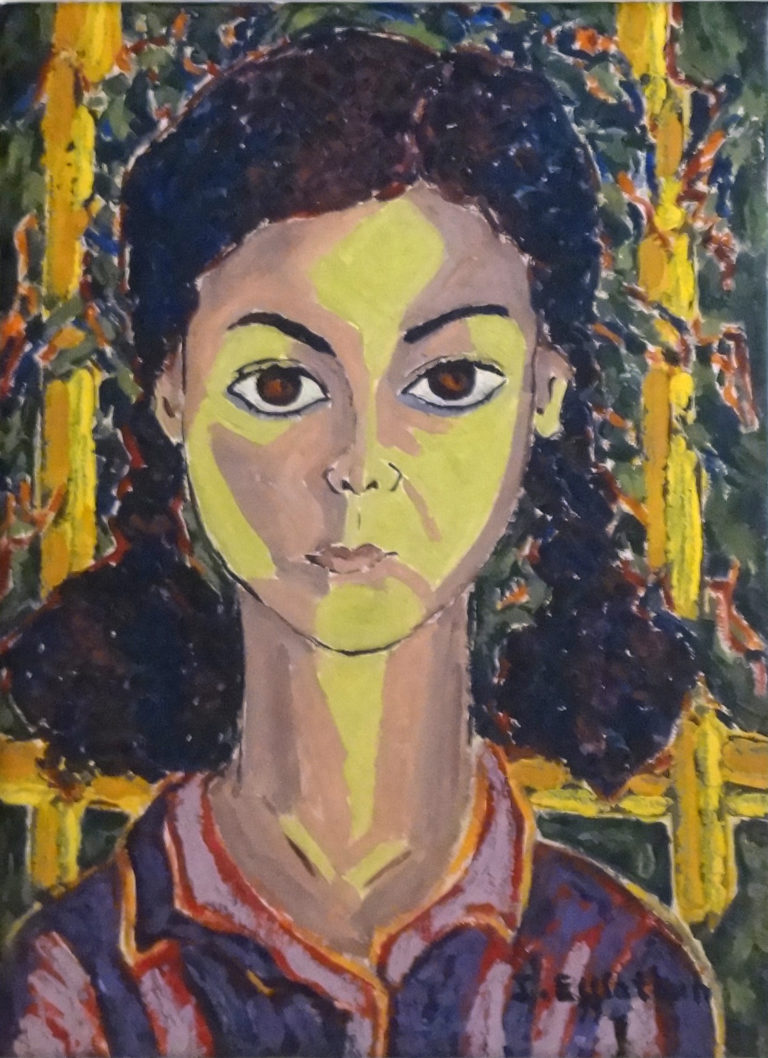

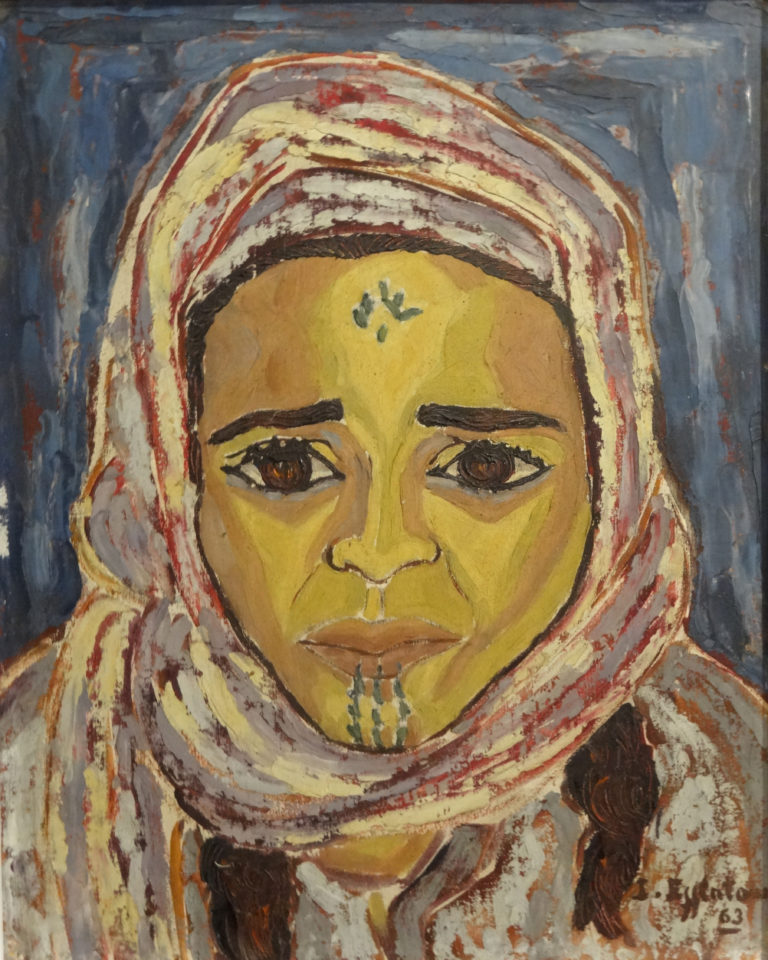
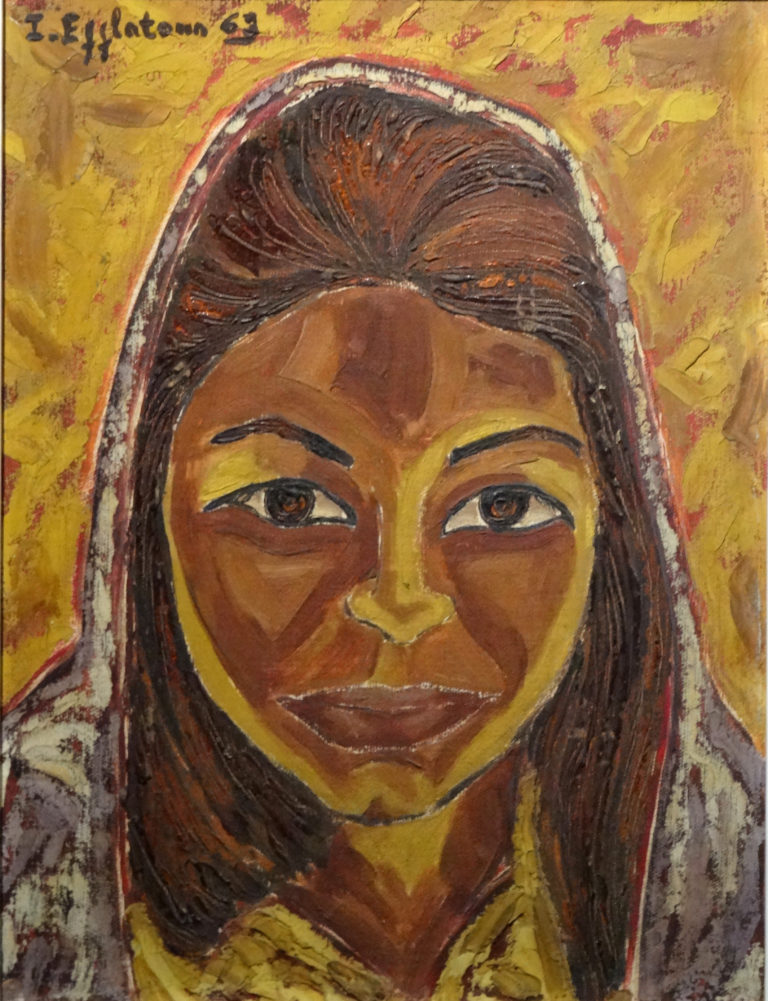
These paintings reveal aspects of everyday life in prison, in spaces that structure collective life such as dormitories, the courtyard, the washhouse, and the refectory. We know that at the behest of the director of her district, Efflatoun occasionally enjoyed the chance to move around the prison to paint.14Efflatoun, Mudhakirat Inji Aflatun, 195. For the artist, the alternating periods of mobility and forced reclusion within the building had an impact on her choice of subject, but also on her process. She reproduced identical figures in several paintings. This is the case, for example, in two scenes that depict prisoners squatting in a row, waiting by the door around the time of the daily walk. One of these paintings is referenced as Al-Qurfasa’ (Women Squatting) in several sources, while the other’s title is unknown [Figs. 7, 8].15See the exhibition brochure “Inji Efflatoun, 6e exposition,” published on the occasion of her exhibition at Akhenaton Gallery in Cairo in March 1964, Inji Efflatoun archives, IFAO. To the far right in both, the same short-haired, turbaned woman has turned her head toward the wall, exposing her neck. Her bare calf appears under her raised galabiya. Punctuated by the curves of backs and legs amplified by the uniforms’ stripes, but also by recurring postures, such as chins resting on hands, the two paintings unfold, frieze like. One, more narrowly focused on the figures, abstracts the details that would allow us to recognize the prison courtyard. Perhaps the artist painted it at a time when she was forbidden to move around the facility and so used the other piece, which was likely made in situ, as a model. We find a similar case among the representations of sailboats, the comings and goings of which Efflatoun could admire from the rooftop of the prison, which was located on the banks of the Nile [Figs. 9, 10]. Two vertical versions of this scene, both with tight framing on the sails, appear identical with the exception of a few details. In their center, two masts are interlaced, forming a cross. All around them, the arrangement of sails and entangled ropes is essentially the same in both works. The touch, however, is different, more fluid, and perhaps smoother on one of the paintings, in which the draping is rendered dynamically by wavy lines. This variation shows an attention brought to the mark-making, or process of painting, beyond the subject represented. As the artist explained at the time, “From nothing as a subject, or even with the same subject all the time, I manage to produce a bunch of compositions that are always renewed. That is a sign of great progress for my work—something that encourages me to work in spite of everything and all the difficulties.”16Efflatoun to Efflatoun-Abdalla, December 4, 1961, IFAO.

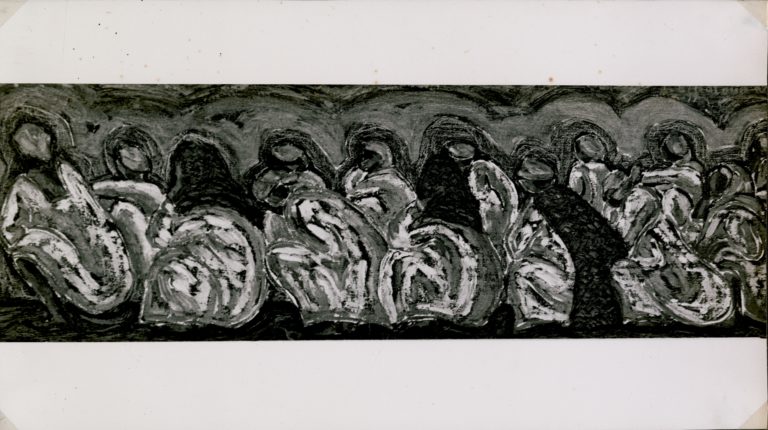
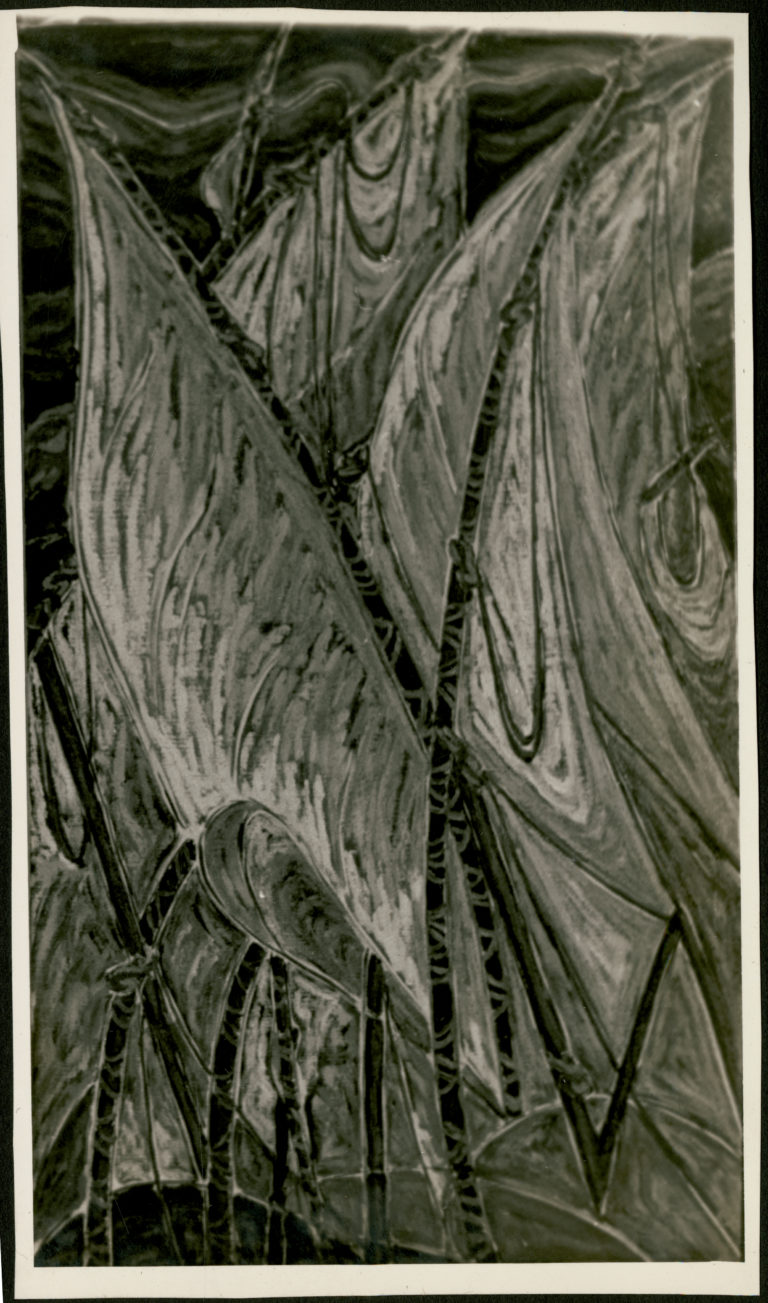
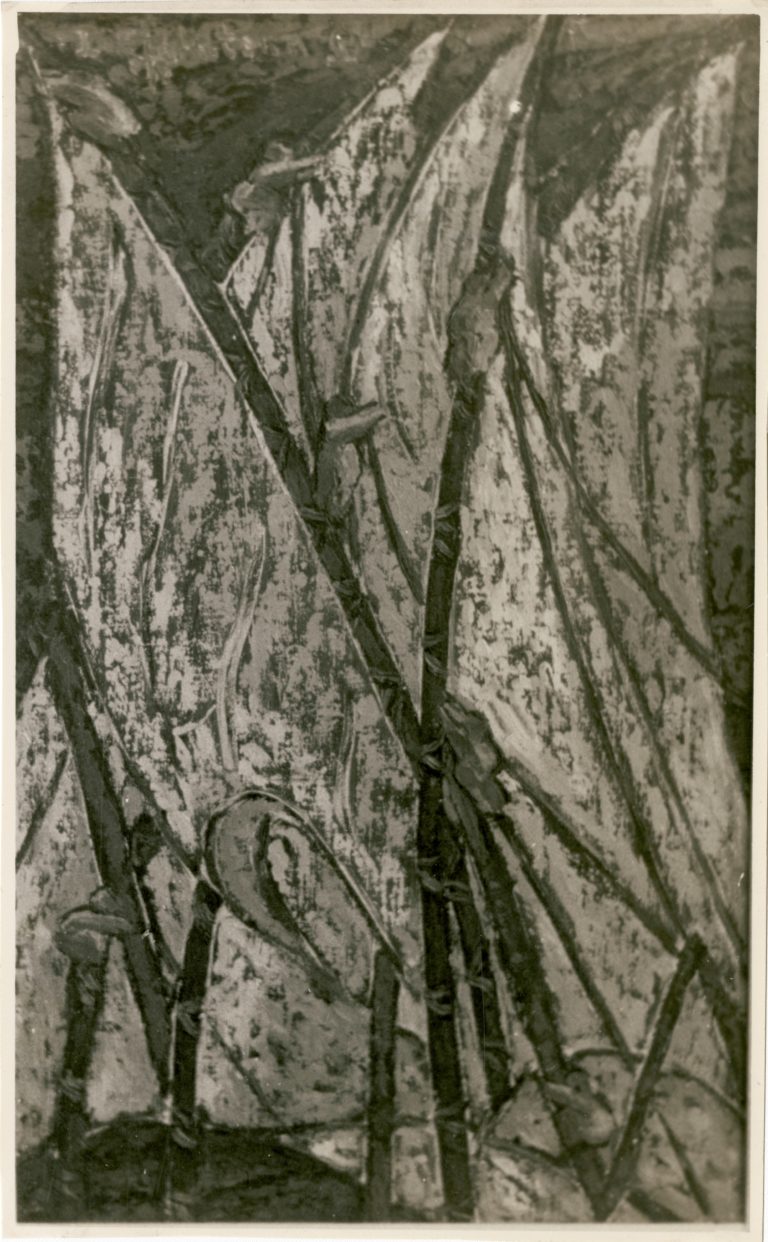
If the serial portraits of prisoners evoke the multitudes of incarcerated women and their miserable fate, by turning her attention to nature, Efflatoun explored less overtly political and social subject matter. Well after her release, she recalled, “The experience of prison revealed the importance of nature to me. Before 1959, I concentrated on expressing the personality, the human being. It was rare for me to paint a painting of nature alone, for itself. But when I was deprived of it, I felt how precious it was. It became a symbol of freedom in my eyes.”17Mohamed Shaaban, Injy (Al-markaz al-qawmi lil sinema, 1988), documentary film. Later, in her memoirs, she added, “If I had been out of prison, I never would have painted a single tree, because the field of possibilities would have been very vast.”18Efflatoun, Mudhakirat Inji Aflatun, 197. However, we know that shortly before her arrest, Efflatoun deposited a painting at the Museum of Modern Art in Cairo for a landscape competition. While in hiding from the police, she learned that she had been awarded first prize.19Betty LaDuke, “Inji Efflatoun: Art, Feminism, and Politics in Egypt,” Art Education 45, no. 2 (1992): 33–41. Beyond this affirmation, the artist had other motivations for turning her gaze to a subject that had barely interested her before. Firstly, because the prison administration benefited from the sale of her paintings, she was ordered to produce saleable images and told that “[t]he subject must be pretty, slender, easy on the eyes.”20Efflatoun to Efflatoun-Abdalla, October 24, 1959, IFAO. The portraits that she did of her fellow inmates were deemed “depressing” and thus unmarketable.21Efflatoun, Mudhakirat Inji Aflatun, 194. Secondly, in the dormitory, Efflatoun occupied the top bunk, which had the advantage of being near a window and offered a view of the outside.22Efflatoun to Efflatoun-Abdalla, August 15, 1959, IFAO. The institution where Efflatoun was detained, which still exists today, is located in the town of Al-Qanater Al-Khayriya in the Nile Delta, a destination popular with residents of Cairo for its gardens. Al-Qanater Al-Khayriya literally means “the beneficent aqueducts” and refers to the dams erected on the Nile. Efflatoun recorded this lush and picturesque context in several paintings, in which bushy trees and flowerbeds appear behind the walls and barbed wire of the prison. But above all, it was weariness with prison life that inspired Efflatoun to look outward. She later recalled, “After a while, I didn’t want to paint the prison, or the prisoners, anymore. I was disgusted by prison.”23Efflatoun, Mudhakirat Inji Aflatun, 196. She then found a favorable prospect in painting landscapes: “[T]his view is the easiest calming agent for our captive souls, and the constant source of hope for the future.” she declared in 1959.24Efflatoun to Efflatoun-Abdalla, November 20, 1959, IFAO. The letter is also reproduced in Efflatoun, Mudhakirat Inji Aflatun, 239–40.
There is, then, in these representations of nature, a symbolic dimension. It seems, in fact, that the artist clung to the vision of plants, sailboats, and the sky as to the hope forfreedom. The very gesture of painting and repainting the same landscape then appears to be an enterprise of mental escape. Efflatoun made several paintings of one tree in particular, to the point that her fellow inmates called it “Inji’s tree” [Figs. 11–13].25Ibid., 197. The different versions of this subject vary in color—ranging from classic brown and green tones to an almost Fauvist palette dominated by shades of violet. The red of the flowers is recurring—the tree is probably a flame tree. The colors, applied in round strokes, are layered on top of each other without any concern for creating depth, and the blue of the sky at times blends with the foliage [Fig. 14]. Efflatoun in fact strove to blur the rules of perspective. Several paintings show branches tangled in the metal bars of the window, passing in front and then behind them despite all likelihood [Fig. 15]. In these images, the separation between interior and exterior is abolished, expressing the artist’s desire for freedom. The color variations in the series are perhaps the result of the irregular supply of tubes of paint—their small format similarly attests to the need to conserve canvas, which was difficult to procure. Perhaps, above all, these chromatic evolutions evoke the passing of time. Efflatoun stated later, in her memoirs, “I painted [this tree] every season.”26Ibid., 196. As she observed in January 1963: “[M]y tree, the one that flowered every year in the middle of winter, is starting to lose its leaves and put on its cloak of red bouquets.”27Efflatoun to Efflatoun-Abdalla, January 12, 1963, IFAO. The experience, through painting, of time passing is all the more striking because Efflatoun was unaware of the ultimate length of her detention. She was tried on December 23, 1960, and sentenced to two years in prison. It was common however for political prisoners not to be released on the day of their acquittal, and in fact, Efflatoun was not freed until July 26, 1963, along with co-detainees after a hunger strike.28Efflatoun, Mudhakirat Inji Aflatun, 200–203; Gulpérie Efflatoun-Abdalla, Récits. La ballade des geôles (Paris: L’Harmattan, 2002): 219–222. The fact that she depicted the same tree over and over can also be seen as an act of ritual, one intended to ward off the anguish of an indefinite incarceration.
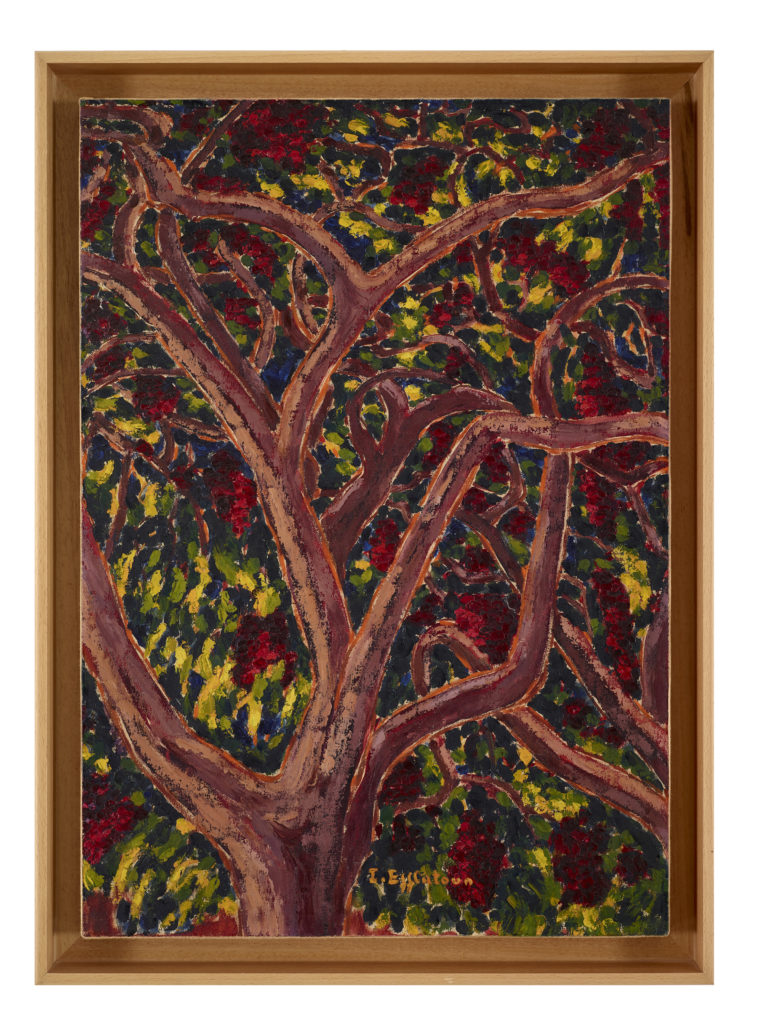

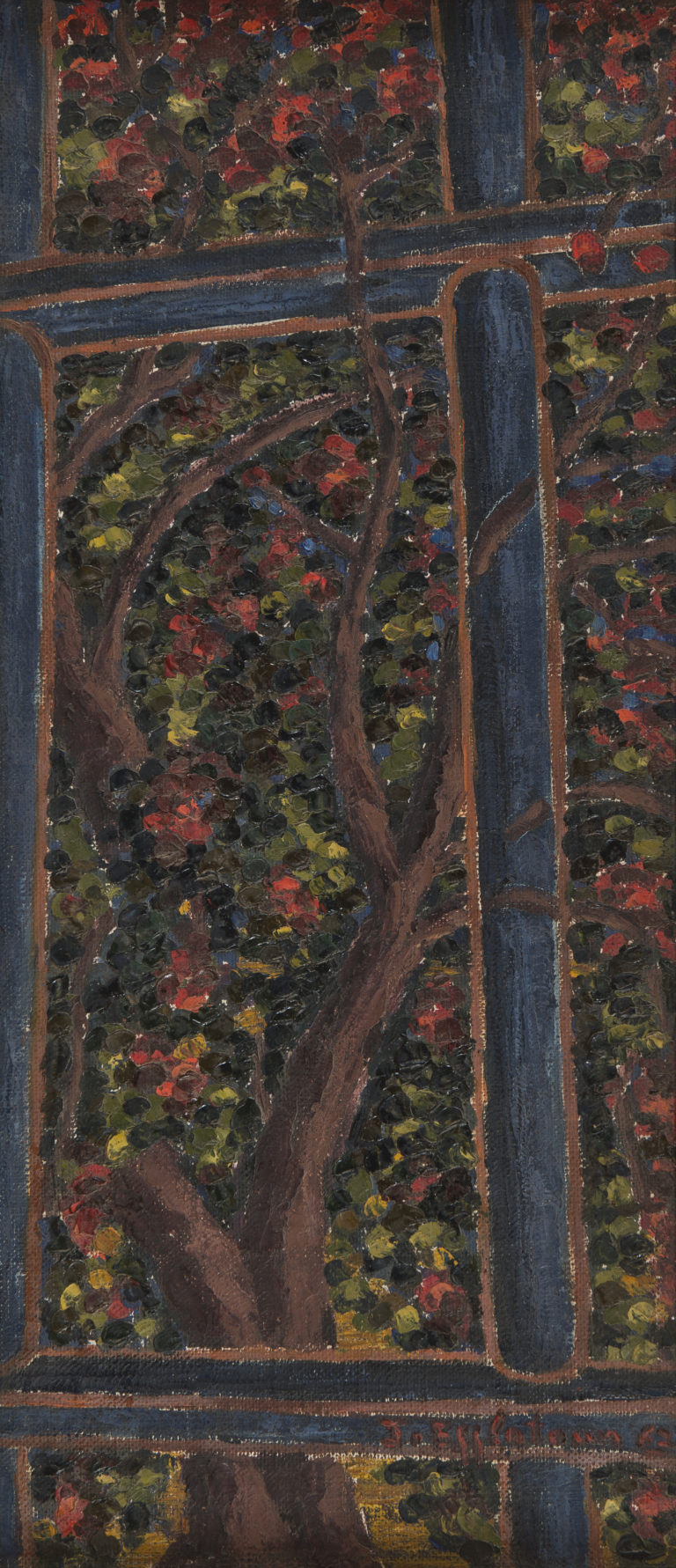
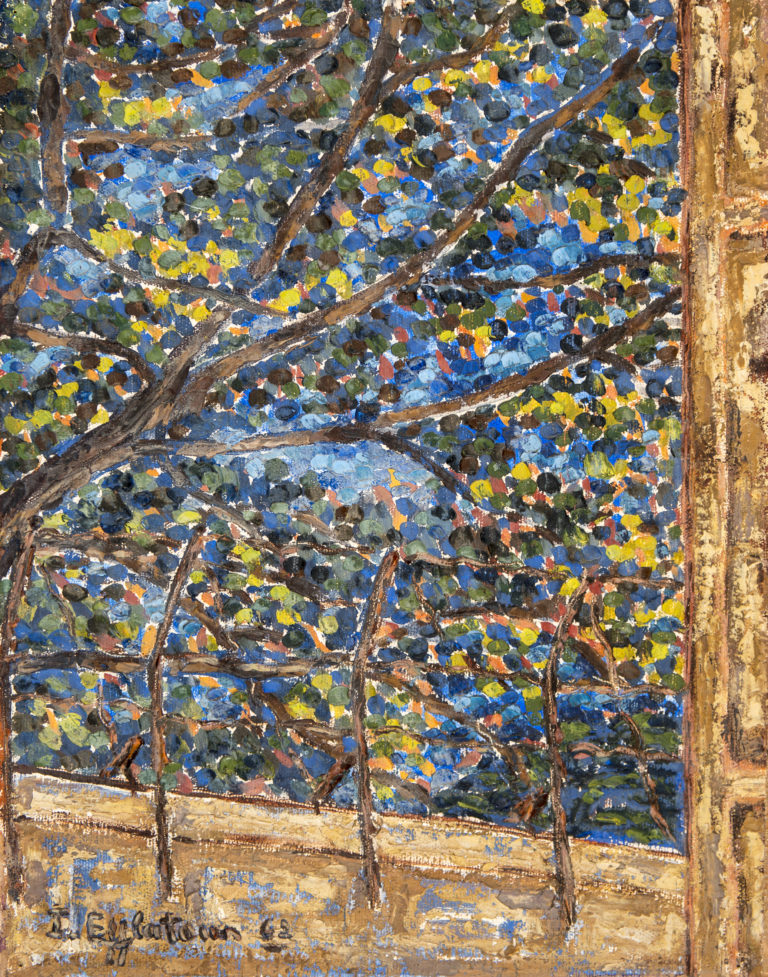
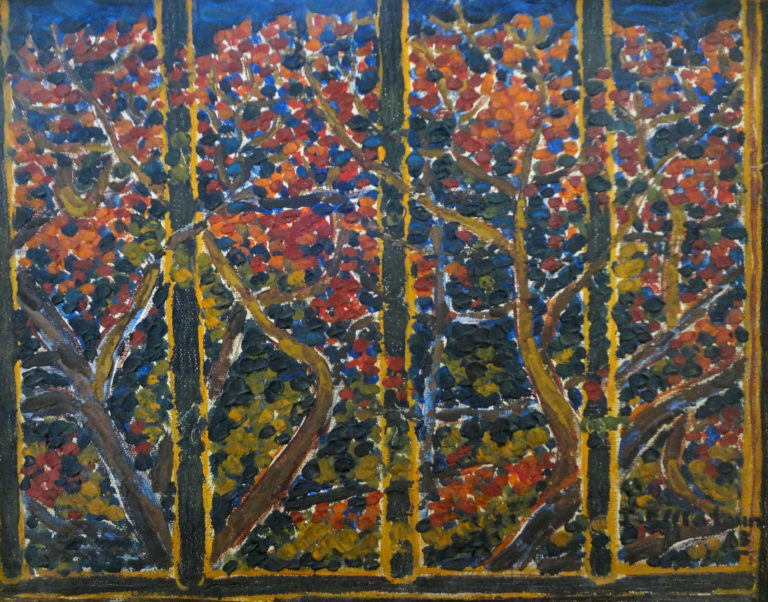
Before her imprisonment, Efflatoun focused on the message she wanted to convey through her artworks. She saw painting as a way to effect concrete change in society, similar to her political activism. She wielded her brush to ensure a better future. By contrast, in prison, her work was anchored to the limitless present. This shift in temporality led to a modification in the artist’s practice, which became a serial endeavor as she responded to the difficult conditions of her detention. With portraits that tell of prisoners’ misery, the artist put seriality in the service of rhetoric. With her representations of nature, she went beyond the militant use of images. Her painted trees, however, preserve a narrative function as they express the desire for freedom—and uncertainty in the face of passing time. Although the tree imposed itself on Efflatoun as a circumstantial subject of representation, by provoking contemplation and crystallizing hope, it was much more than a pretext. Its significance is evidenced by the fact that even after her release from prison, it remained a central motif in her pictorial production. From the mid-1960s onward, Efflatoun painted mostly rural landscapes studded with fruit trees and palm trees. One painting, believed to be from the 1970s, evokes the famous “Inji tree” [Fig. 16].29See Tree behind wall, n.d. (c. 1970s), oil on wood, 15 3/4 x 9 7/16 in. (40 x 24 cm). The English titles associated with Efflatoun’s paintings generally have been assigned by SafarKhan, the gallery that represents part of the Efflatoun estate, and not by the artist. Despite the differences in colors and framing, this painting is, down to its dimensions, a copy of another painting thought to have been executed in prison [Fig. 17].30Trees behind the walls, n.d. (c. 1960), oil on canvas mounted on wood, 9 1/16 x 14 3/16 in. (23 x 36 cm), Cairo. This painting, presumed to be from 1960, is reproduced in Anneka Lenssen, Sarah Rogers, and Nada Shabout, eds., Modern Art in the Arab World, Primary Documents8 (New York: The Museum of Modern Art, 2008), 130, plate 21. Neither work is dated. Though errors cannot be ruled out, other examples confirm that after her release, Efflatoun reproduced scenes she first depicted while imprisoned.31See, for example, Attente (Waiting), 1968, oil on canvas, 90 9/16 x 31 1/2 in. (230 x 80 cm), which is modeled after Al-Qurfasaʾ of 1960. Attente is reproduced in Badr Eddine Abou Ghazi, Visages de l’art contemporain égyptien, exh. cat. (Paris: Les Presses Artistiques, 1971), n.p.
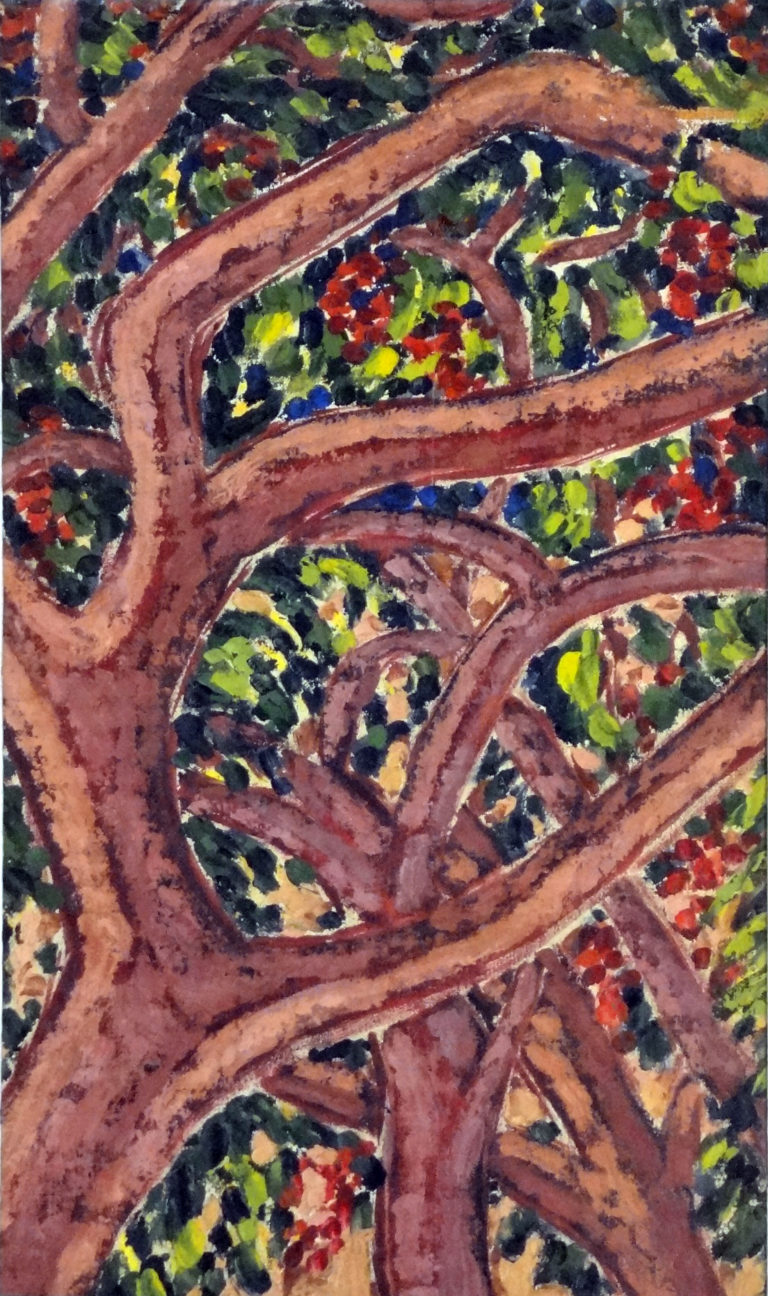
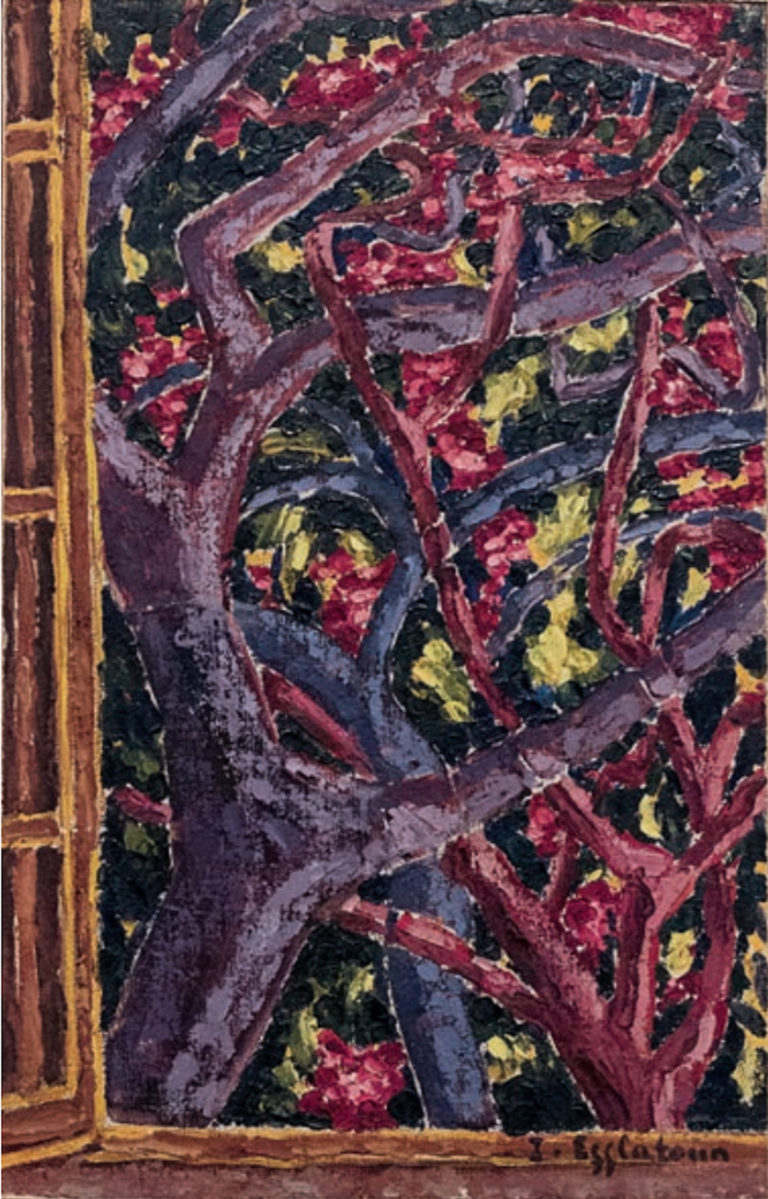
How should we understand these iconographic reiterations? As the continuation of a formal exploration of inexhaustible subjects in a serial logic? Or as a way for an artist, who resolved upon her release from prison to distance herself from her radical positions, to continue to bear witness to the oppression the Nasser regime imposed upon those who opposed it, both male and female? Can we go so far as to consider Efflatoun’s post-prison production, conceived as a celebration of nature and the clarity of the sun,32On the importance of light in Efflatoun’s post-prison production, see Anneka Lenssen,“Inji Efflatoun: White Light,” Afterall: A Journal of Art Context and Enquiry 42 (Autumn/Winter 2016): 84–95. as the counter-image of the deprivations suffered during her detention?
Translated from French by Jeanine Herman.
- 1Efflatoun writes “irrenouvable” instead of “inrenouvelable”, which is a word that does not exist and may come from the language interferences specific to Egyptian Francophonie. Thanks to Mercedes Volait who noted this peculiar term.
- 2Inji Efflatoun to Gulpérie Efflatoun-Abdalla, May 22, 1963, Inji Efflatoun archives, French Institute for Oriental Archaeology, Cairo (hereafter abbreviated as IFAO).
- 3For more about the ideological expressions of Nasserism and its conflicted relationship to the Egyptian intelligentsia, see Anouar Abdel-Malek, Égypte, société militaire (Paris: Éditions du Seuil, 1962); and Salah Isa, Muthaqqafun wa ‘askar (Cairo: Maktabat Madbuli, 1986).
- 4Efflatoun gives an account of her artistic activity in prison in her memoirs: Inji Efflatoun, Mudhakirat Inji Aflatun. Min al-tofula ila al-sign, ed. Said Khayal (Cairo: Dar al-thaqafa al-gadida, 2014), 193–97. Unpublished correspondence between the painter and her sister, Gulpérie Efflatoun-Abdalla, held in the Inji Efflatoun archives, IFAO, also helps shed light on this period. See also the portrait of the artist by Betty LaDuke, “Egyptian Painter Inji Efflatoun: The Merging of Art, Feminism, and Politics,” NWSAJournal 1, no. 3 (Spring 1989): 474–485.
- 5These are mostly paintings from the artist’s personal collection which she kept until her death. Today these works are dispersed among different museums and institutions in Egypt and other Arab countries.
- 6Efflatoun to Efflatoun-Abdalla, October 24, 1959, IFAO.
- 7Art et Liberté (Gamaʿiyat al-Fann wal-Horriya in Arabic) was a cosmopolitan group of artists, writers, and intellectuals active between 1938 and 1948. The group gathered around Marxist convictions and the belief that art—and surrealism in particular—was a means to resist the fascist and nationalist movements that were rising in Egypt and worldwide. See, among other sources, Aimé Azar, Les Inquiets (Cairo: Imprimerie Française, 1954); and Sam Bardaouil, Surrealism in Egypt: Modernism and the Art and Liberty Group (London and New York: I. B. Tauris, 2017).
- 8Efflatoun exhibited her work in the following Cairo galleries: ADAM (1952), Aladdin (1953), Le Galion (1953), and l’Atelier du Caire (1959).
- 9On the topic of Efflatoun’s writings and political activities, see Didier Monciaud, “Les engagements d’Inji Aflâtûn dans l’Égypte des années quarante: la radicalisation d’une jeune éduquée au croisement des questions nationale, femme et sociale,” Cahiers d’Histoire. Revue d’Histoire Critique 126 (2015): 73–95.
- 10Efflatoun, Mudhakirat Inji Aflatun, 102. On the narrative dimension of Efflatoun’s painting, see Nadine Atallah, “Have There Really Been No Great Women Artists? Writing a Feminist Art History of Modern Egypt,” in Under the Skin: Feminist Art and Art Histories from the Middle East and North Africa Today, eds. Ceren Özpınar and Mary Kelly, Proceedings of the British Academy (Oxford: Oxford University Press, 2020), 11–25.
- 11Efflatoun, Mudhakirat Inji Aflatun, 196.
- 12Efflatoun to Efflatoun-Abdalla, July 6, 1959, IFAO.
- 13Efflatoun to Efflatoun-Abdalla, August 15, 1959, IFAO.
- 14Efflatoun, Mudhakirat Inji Aflatun, 195.
- 15See the exhibition brochure “Inji Efflatoun, 6e exposition,” published on the occasion of her exhibition at Akhenaton Gallery in Cairo in March 1964, Inji Efflatoun archives, IFAO.
- 16Efflatoun to Efflatoun-Abdalla, December 4, 1961, IFAO.
- 17Mohamed Shaaban, Injy (Al-markaz al-qawmi lil sinema, 1988), documentary film.
- 18Efflatoun, Mudhakirat Inji Aflatun, 197.
- 19Betty LaDuke, “Inji Efflatoun: Art, Feminism, and Politics in Egypt,” Art Education 45, no. 2 (1992): 33–41.
- 20Efflatoun to Efflatoun-Abdalla, October 24, 1959, IFAO.
- 21Efflatoun, Mudhakirat Inji Aflatun, 194.
- 22Efflatoun to Efflatoun-Abdalla, August 15, 1959, IFAO.
- 23Efflatoun, Mudhakirat Inji Aflatun, 196.
- 24Efflatoun to Efflatoun-Abdalla, November 20, 1959, IFAO. The letter is also reproduced in Efflatoun, Mudhakirat Inji Aflatun, 239–40.
- 25Ibid., 197.
- 26Ibid., 196.
- 27Efflatoun to Efflatoun-Abdalla, January 12, 1963, IFAO.
- 28Efflatoun, Mudhakirat Inji Aflatun, 200–203; Gulpérie Efflatoun-Abdalla, Récits. La ballade des geôles (Paris: L’Harmattan, 2002): 219–222.
- 29See Tree behind wall, n.d. (c. 1970s), oil on wood, 15 3/4 x 9 7/16 in. (40 x 24 cm). The English titles associated with Efflatoun’s paintings generally have been assigned by SafarKhan, the gallery that represents part of the Efflatoun estate, and not by the artist.
- 30Trees behind the walls, n.d. (c. 1960), oil on canvas mounted on wood, 9 1/16 x 14 3/16 in. (23 x 36 cm), Cairo. This painting, presumed to be from 1960, is reproduced in Anneka Lenssen, Sarah Rogers, and Nada Shabout, eds., Modern Art in the Arab World, Primary Documents8 (New York: The Museum of Modern Art, 2008), 130, plate 21.
- 31See, for example, Attente (Waiting), 1968, oil on canvas, 90 9/16 x 31 1/2 in. (230 x 80 cm), which is modeled after Al-Qurfasaʾ of 1960. Attente is reproduced in Badr Eddine Abou Ghazi, Visages de l’art contemporain égyptien, exh. cat. (Paris: Les Presses Artistiques, 1971), n.p.
- 32On the importance of light in Efflatoun’s post-prison production, see Anneka Lenssen,“Inji Efflatoun: White Light,” Afterall: A Journal of Art Context and Enquiry 42 (Autumn/Winter 2016): 84–95.
